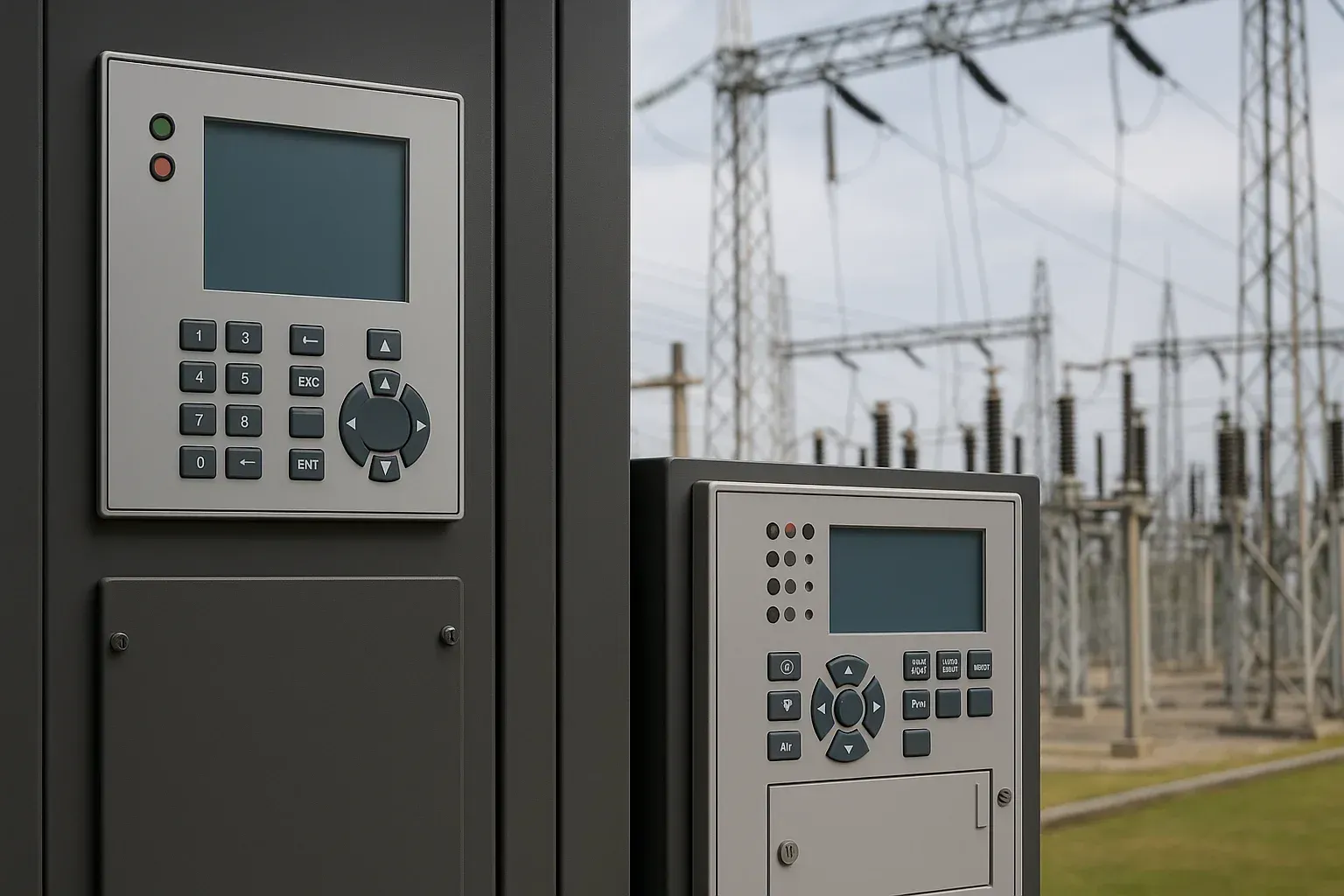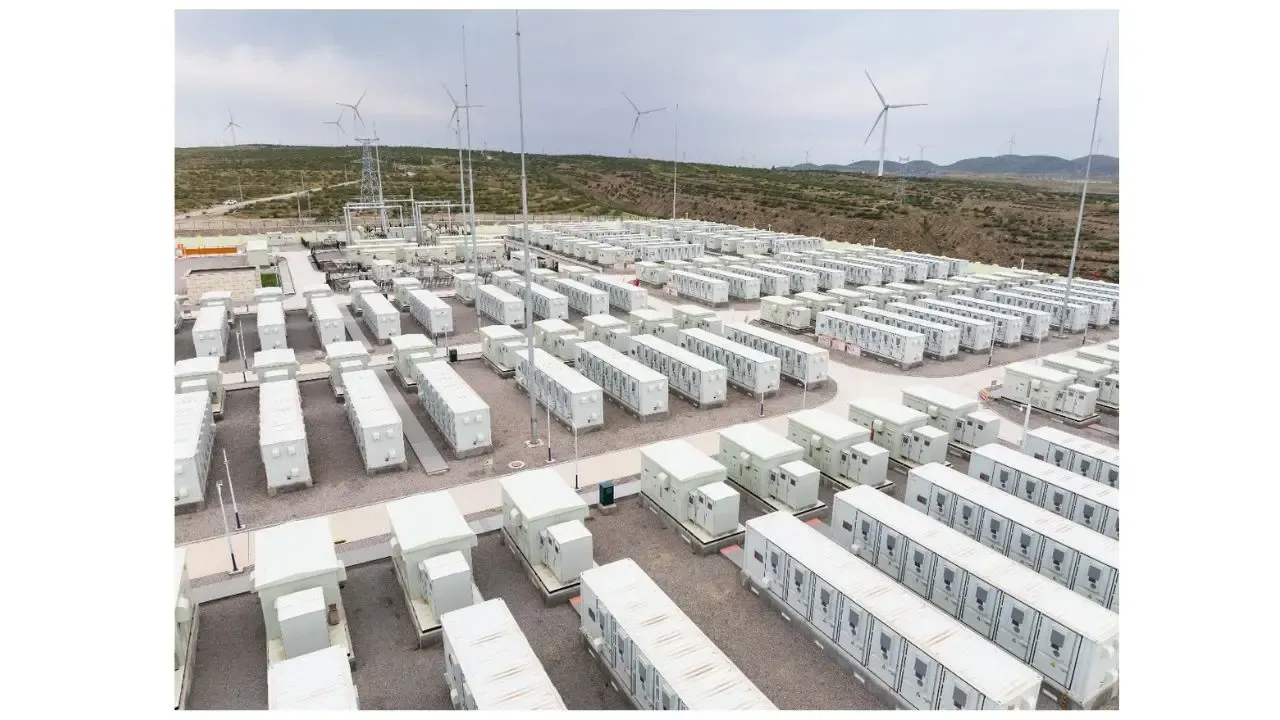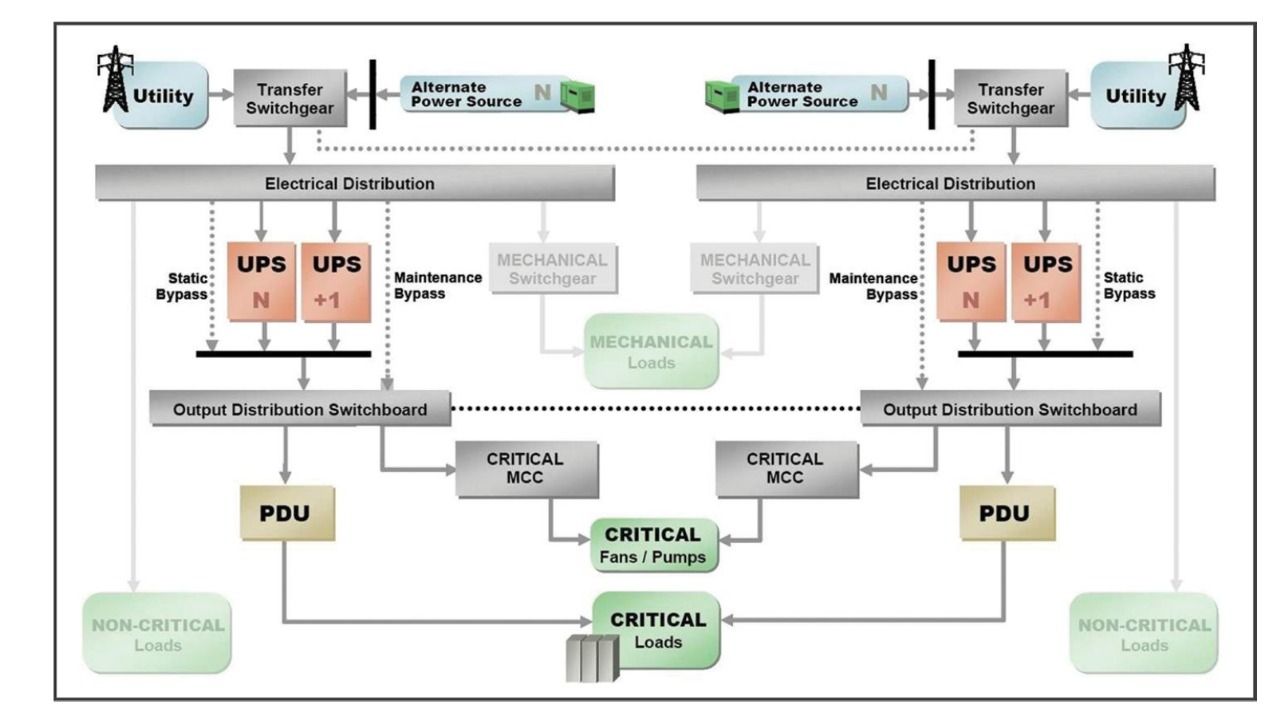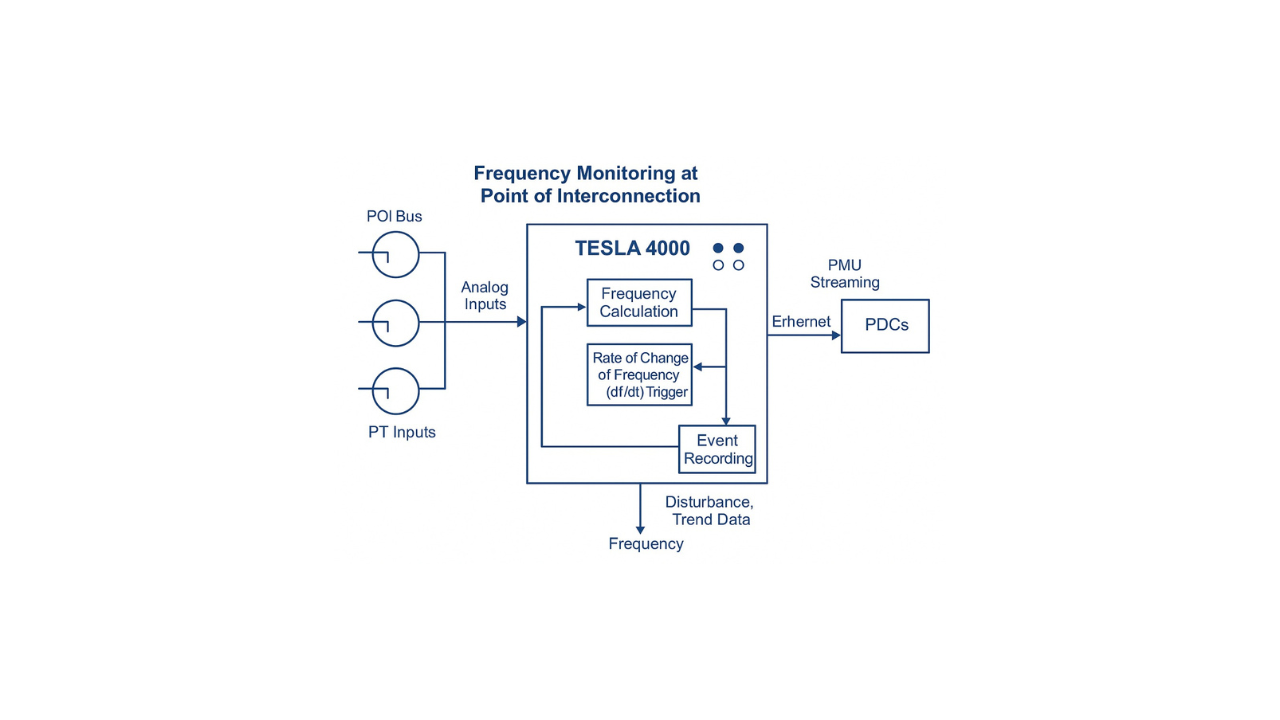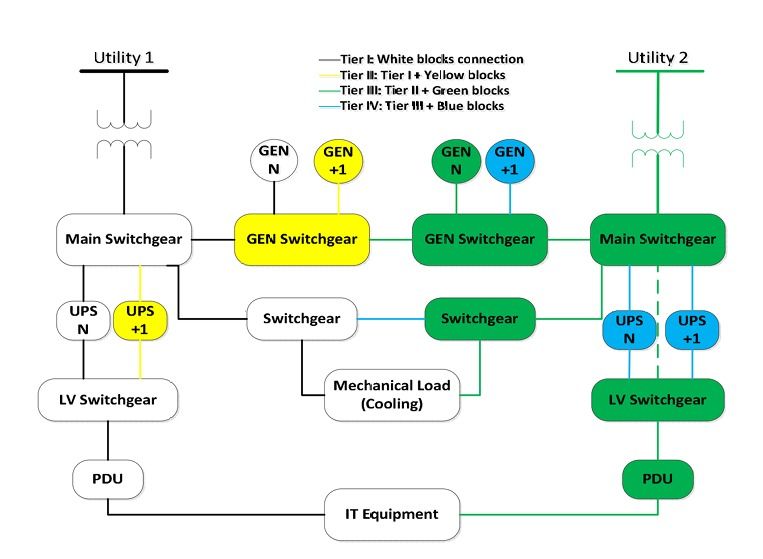Dynamic Equivalents for Large-Scale Power Systems Using PSS®E – A Systematic Approach
June 8, 2025 | Blog

Introduction: Why Dynamic Equivalents Are Critical in Modern Power Grids
As modern grids grow more interconnected and data-heavy, utilities face a major challenge: how to model and simulate large-scale power systems accurately — without overwhelming simulation tools or compromising speed. Full-model simulations of utility-scale networks are often too complex and time-consuming for day-to-day studies. Learn more about our approach on Power System Studies.
That’s where dynamic equivalents come in. These simplified models retain the key dynamic behavior of a power system while reducing size and complexity. Used in tools like PSS®E, they help engineers simulate disturbances, tune controllers, and protect sensitive data more efficiently. You can also explore our in-depth breakdown of PSS/E, TSAT, and PSCAD modeling workflows.
In this article, we walk through a proven method for developing psse dynamic modeling services based on real-world utility use. The approach supports advanced utility-scale power system modeling, from controller tuning to EMT simulations, using automated workflows in PSS®E. Whether you’re planning renewables, conducting dynamic security assessments, or reducing simulation load, this technique can improve both speed and accuracy. Learn how Keentel Engineering can support your modeling strategy as a trusted Owner’s Engineer.
What Are Dynamic Equivalents in Power Systems?
A dynamic equivalent is a simplified model that represents part of a larger power system — specifically, the parts that have limited influence on your area of study. Instead of simulating every transmission line, transformer, and generator in detail, engineers replace remote or low-impact sections with a smaller model that behaves similarly during system disturbances.
This technique is a foundation of psse dynamic modeling, helping utilities focus on what matters without compromising performance.
For a broader look at how we apply this in utility-scale power system modeling, see our Power System Studies services.
Dynamic equivalents are widely used for:
- Dynamic security assessment (DSA)
- Real-time simulation
- Controller design and testing
- Training and EMT modeling
Key benefits of using dynamic equivalents:
- Significant reduction in simulation time and model complexity
- Easier controller tuning and design validation
- Improved data confidentiality — utilities can protect sensitive grid data
- Better support for fast EMT simulations and real-time control room training
These benefits are why most psse modeling services today include dynamic reduction by default — it saves time, improves accuracy, and scales across applications.
Challenges in Modeling Large Power Systems
Utilities and system planners often work with networks containing thousands of buses, devices, and control elements. This complexity creates several challenges:
- Computational limits: Full-detail simulations are slow and resource-intensive
- Geographic separation: Remote system areas often have little influence but still bloat the model
- Security concerns: Full models expose sensitive utility infrastructure
- Maintenance overhead: Constant updates are required when working with detailed topologies
- Control complexity: The more devices modeled, the harder it is to tune stabilizers, governors, etc.
To address these, engineers use psse dynamic modeling services to generate equivalents — keeping what matters and trimming what doesn't.
Methods for Developing Dynamic Equivalents
Techniques for creating dynamic equivalents have improved greatly over the years:
- Coherency-based grouping: Combines generators that behave similarly under system events
- Modal analysis: Identifies and preserves key oscillation behaviors
- Slow coherency: Focuses on long-term, low-frequency behavior
- Time-domain aggregation: Matches performance over time-series simulations
- AI & ANN methods: Machine learning helps automate and refine accuracy
Today’s most reliable psse dynamic modeling uses a hybrid approach — blending traditional engineering with AI-enhanced automation.
Related Reading:
Stability modeling with PSS/E, PSCAD & TSAT
A Proven Approach Using PSS®E
At Keentel Engineering, we apply a method used by utilities worldwide. This approach follows a three-step process for creating effective dynamic equivalents within PSS/E:
Step 1: Net Small Generators with Loads
Any generator below 380 kV is “netted” with its connected load. This eliminates unnecessary generator detail and simplifies the model
Step 2: Aggregate Coherent Generators
Using PSS®E’s time-domain simulation, we identify generators that respond the same way during events (coherent behavior). These are grouped together while keeping key dynamic features like inertia, exciters, governors, and stabilizers.
Step 3: Apply Static Network Reduction
PSS®E’s network equivalencing tools reduce the rest of the grid (typically below 230 kV) to an admittance matrix. This matrix behaves like the original network but is much smaller and easier to simulate.
Why This Method Stands Out
- Python automation: Entire modeling workflow is scriptable in Python for consistency and speed
- High accuracy: The reduced model mirrors both steady-state and dynamic performance of the full model
- Proven efficiency: Example case — reduced from 2,785 buses to 127 without losing critical behavior
- Use case-ready: Perfect for controller tuning, DSA, EMT studies, and planning
This makes it ideal for clients needing fast, scalable psse modeling services across operational and planning environments.
Real-World Applications of Dynamic Equivalents
Keentel Engineering supports public and private utility clients across the U.S. with expert-level psse dynamic modeling for:
- Dynamic Security Assessment (DSA): Simulate grid stability in near real-time
- Controller Design & Tuning: Test exciters, stabilizers, governors in simplified models
- EMT Simulations: Run faster, more stable simulations in PSCAD or TSAT
- Operator Training: Simulate real grid events in training software
- Renewable Integration Studies: Especially for grids with high inverter-based resource (IBR) penetration
Ready to modernize your modeling workflow? Contact Keentel for tailored solutions in grid modeling and reduction.
Conclusion: Build Smarter, Faster Power System Models
Dynamic equivalents are essential for managing the size and complexity of today’s power systems. When built correctly using tools like PSS®E, they make simulation faster, protect sensitive utility data, and allow engineers to focus on the parts of the grid that matter most.
Whether you're handling stability studies, integrating renewables, or training grid operators, our proven modeling process ensures accuracy without overloading your simulation tools. With our experience in PSS/E dynamic modeling services, Keentel Engineering helps utilities simplify, simulate, and succeed.
Why Choose Keentel Engineering?
At Keentel Engineering, we bring decades of real-world experience to every modeling project. Here’s what sets us apart:
- Deep Technical Expertise: Our engineers are fluent in PSS®E, PSCAD, TSAT, and EMT simulation tools.
- Utility-Scale Focus: We specialize in large, complex power systems for public utilities, IPPs, and grid operators.
- Proven Track Record: From model reduction to controller design, our work is backed by real case studies and field validation.
- Automation & Speed: We use Python scripting to streamline PSS/E workflows, saving time and ensuring accuracy.
- End-to-End Support: From concept to commissioning, we partner with you at every step.
Let’s discuss how we can simplify your modeling challenges.
Contact us today.
FAQ: Dynamic Equivalents, Modeling, and Power System Stability
What is a dynamic equivalent power system?
A dynamic equivalent is a simplified model of parts of the power system that don't affect the main study area much. Instead of modeling everything in detail, we replace remote areas with a basic version that reacts the same way during disturbances.
What is the dynamic model of a power system?
A dynamic model shows how the power system behaves over time. It includes things like how generators, motors, and controls respond to changes like faults, load changes, or switching events.
What is dynamic study in power system analysis?
A dynamic study checks how stable the system is when something changes suddenly — like a line trip, fault, or generator disconnection. It helps engineers plan protection and response.
What does power system dynamics mean?
Power system dynamics refers to the way the whole grid responds to changes in load and generation. It's all about how the system stays balanced and stable when things shift.
What is an example of power dynamics?
In the grid, power dynamics show up when generation and demand shift quickly. For example, a large industrial load turning on can cause a drop in system frequency unless balanced.
What are the three types of power dynamics (generally)?
While not grid-specific, power dynamics can be classified as:
- Steady-state (long-term behavior)
- Transient (short-term after a change)
- Small-signal (oscillations and fine control tuning)
Why are dynamic equivalents used?
To speed up simulations, simplify models, protect data, and enable advanced studies like dynamic security assessment.
What software is used for dynamic equivalents?
PSS/E is a widely used tool, often combined with Python or MATLAB for automation.
What is "coherency" in generator aggregation?
Generators that respond similarly to disturbances are grouped as coherent and aggregated.
How is accuracy validated?
By comparing steady-state voltages, angles, and power flows, as well as dynamic responses under faults.
Can this method be applied to renewable-rich grids?
Yes, but careful modeling of inverter-based resources (IBRs) and their controls is required.
Is ANN-based dynamic reduction mature?
Research is ongoing, but hybrid ANN + traditional methods show great promise.
Can reduced models be used for EMT studies?
Yes, if the aggregation retains sufficient dynamic detail.
How much size reduction can be achieved?
In the SEC example, a 2785-bus system was reduced to 127 buses — a massive simplification.
Does PSS/E require custom coding?
The reduction can be automated via Python, but core functionality is available in PSS/E.
Ready to Simplify and Accelerate Your Power System Studies?
Whether you're managing large-scale grids, integrating renewables, or preparing for dynamic security assessments, our experts can help.
Partner with Keentel Engineering for advanced modeling solutions using PSS®E, EMT tools, and real-world proven techniques.
Contact us today to streamline your simulations and strengthen your grid planning.

About the Author:
Sonny Patel P.E. EC
IEEE Senior Member
In 1995, Sandip (Sonny) R. Patel earned his Electrical Engineering degree from the University of Illinois, specializing in Electrical Engineering . But degrees don’t build legacies—action does. For three decades, he’s been shaping the future of engineering, not just as a licensed Professional Engineer across multiple states (Florida, California, New York, West Virginia, and Minnesota), but as a doer. A builder. A leader. Not just an engineer. A Licensed Electrical Contractor in Florida with an Unlimited EC license. Not just an executive. The founder and CEO of KEENTEL LLC—where expertise meets execution. Three decades. Multiple states. Endless impact.
Services

Let's Discuss Your Project
Let's book a call to discuss your electrical engineering project that we can help you with.

About the Author:
Sonny Patel P.E. EC
IEEE Senior Member
In 1995, Sandip (Sonny) R. Patel earned his Electrical Engineering degree from the University of Illinois, specializing in Electrical Engineering . But degrees don’t build legacies—action does. For three decades, he’s been shaping the future of engineering, not just as a licensed Professional Engineer across multiple states (Florida, California, New York, West Virginia, and Minnesota), but as a doer. A builder. A leader. Not just an engineer. A Licensed Electrical Contractor in Florida with an Unlimited EC license. Not just an executive. The founder and CEO of KEENTEL LLC—where expertise meets execution. Three decades. Multiple states. Endless impact.
Leave a Comment
We will get back to you as soon as possible.
Please try again later.




